When David and Jeanette Reiss-Andersen, cofounders of the Oslo-based tiny home company Norske Mikrohus, set to work on their most recent project, their goal was to provide an environmentally friendly alternative to the standard-size home. "We wanted to create something for people looking for a way out of the rental and mortgage markets-something for those who want easy access to nature and to live with fewer possessions," David says. The result is Tind-a wood-wrapped house on wheels that measures 70 square feet and starts at $90K.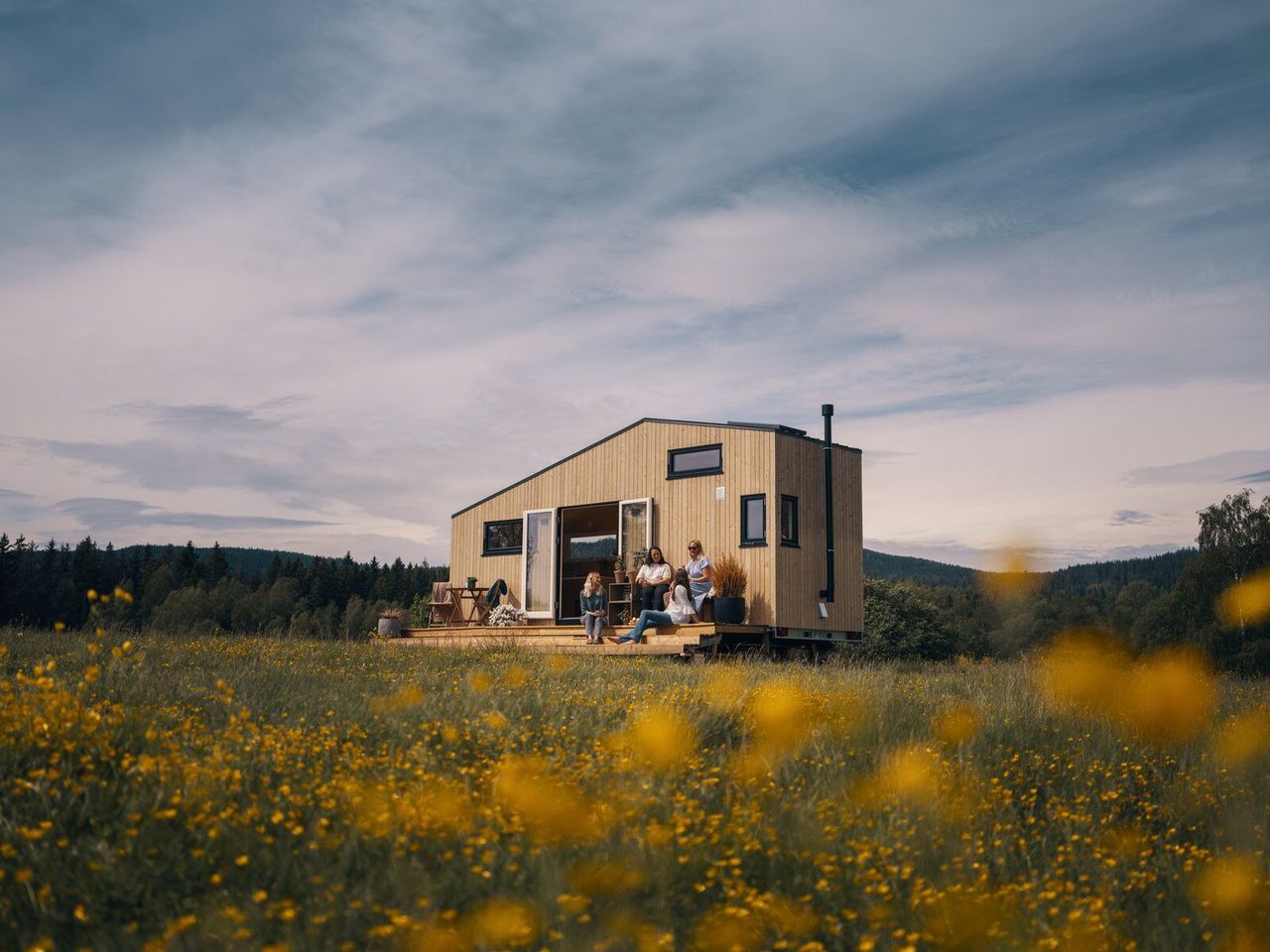
The Tind tiny home was inspired by the mountains and woods of Norway, and it’s clad in Norwegian spruce.. 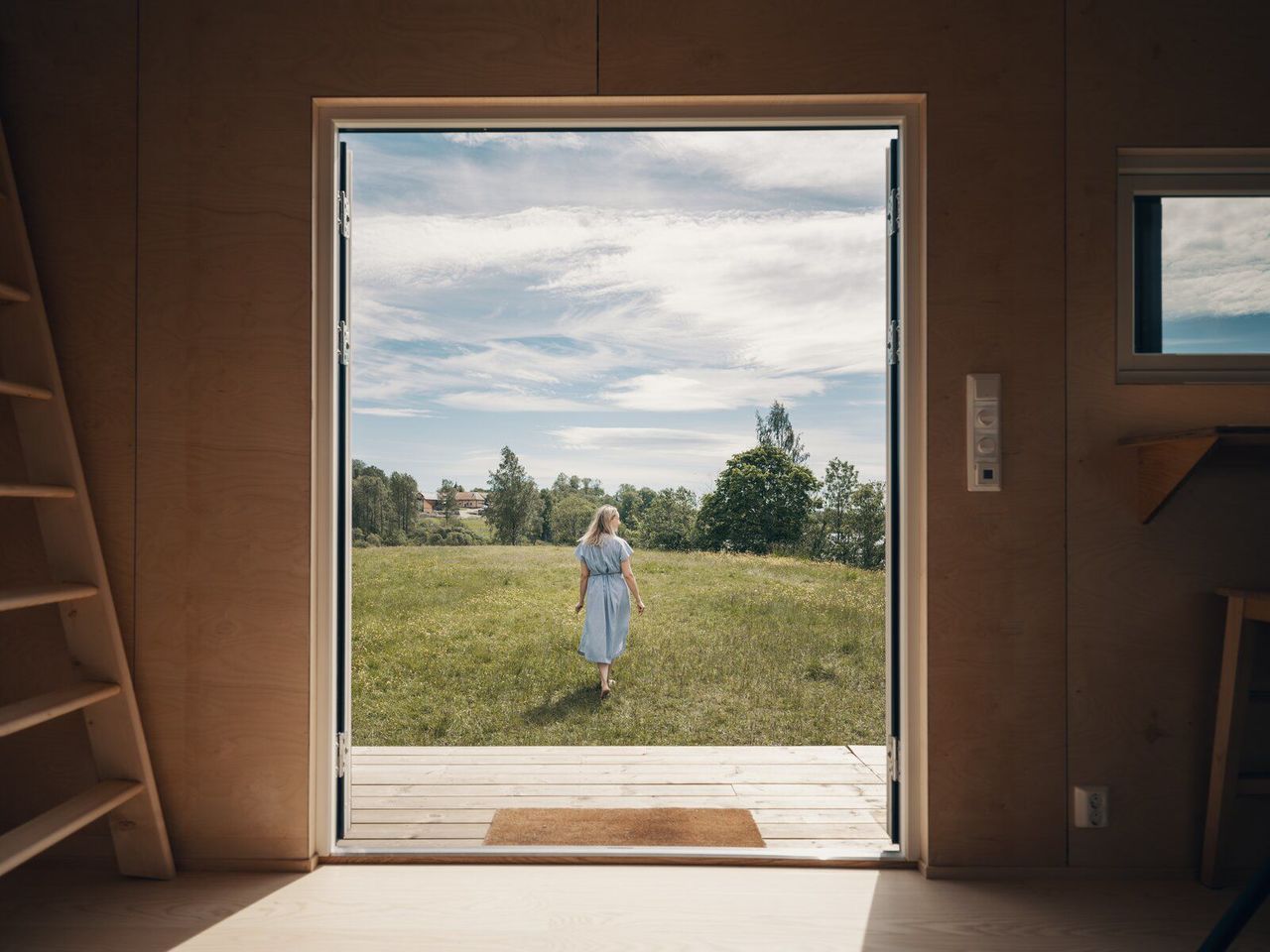
Large glass doors open the living area to the outdoors.
In imagining Tind, Jeanette, the company’s lead designer, knew she wanted both the exterior and the interior to be sheathed in wood. "We wanted the model to have a modern, natural feel," she says. "It’s in contrast to Vilde, our more classic model."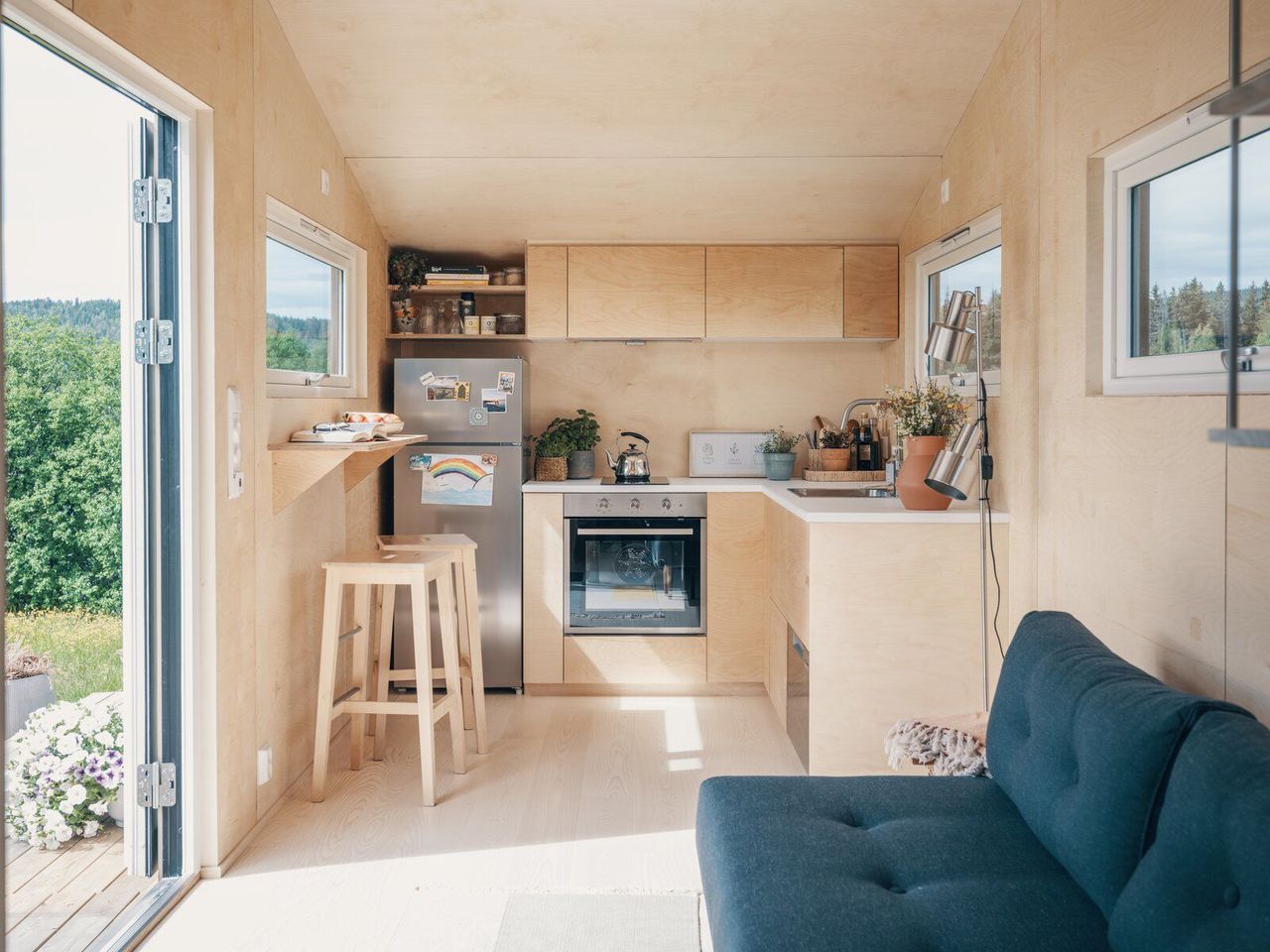
The open-plan kitchen and living area are outfitted with birch veneer walls. The flooring is ash.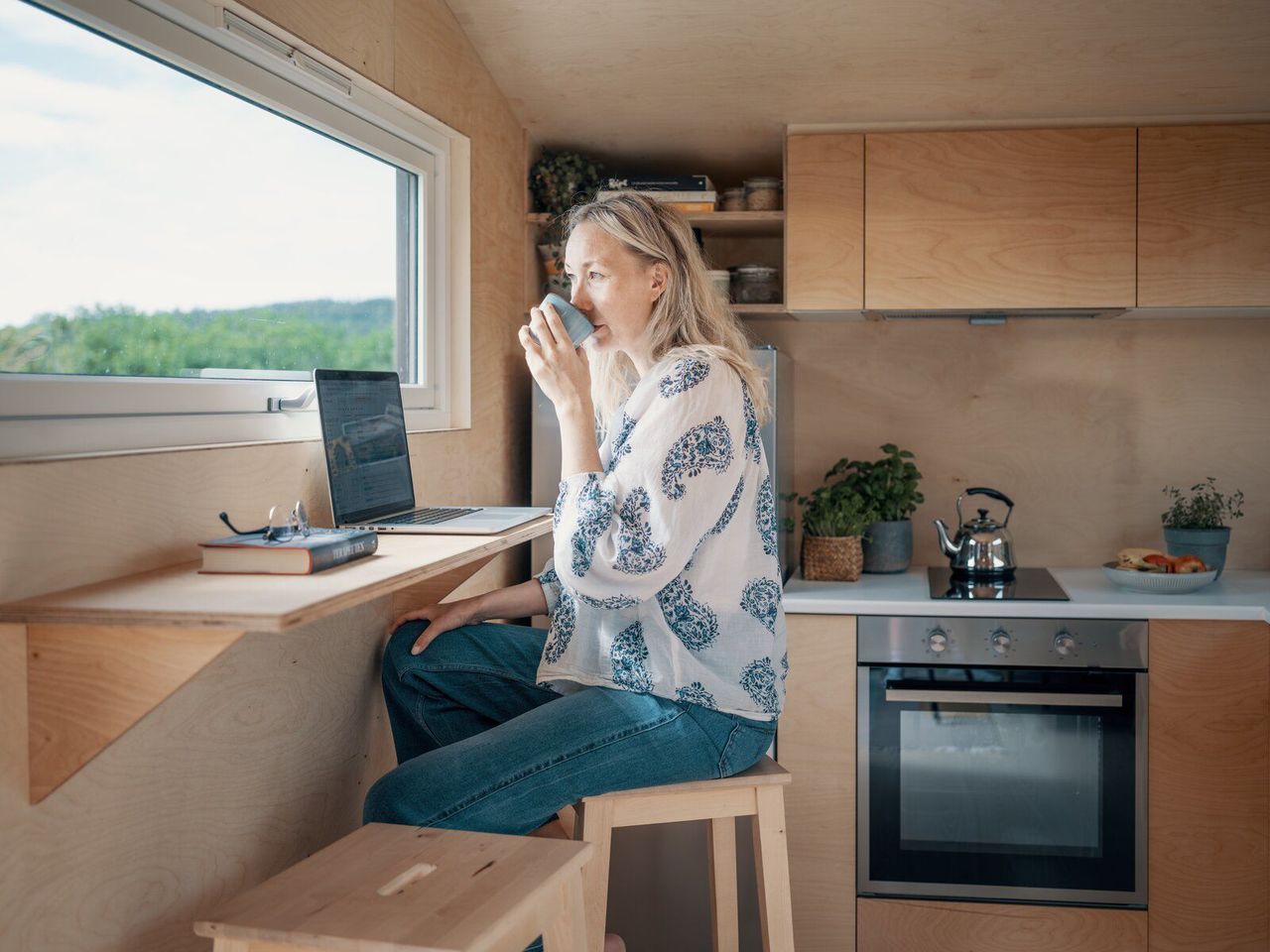
A built-in wood counter beneath a large window in the kitchen serves as a workspace and dining area.
Clad in Norwegian spruce on the exterior and birch veneer on the interior, Tind is as practical as it is elegantly understated. Black aluminum window frames offset the pale tone of the spruce and create an aesthetic that’s both warm and elegant.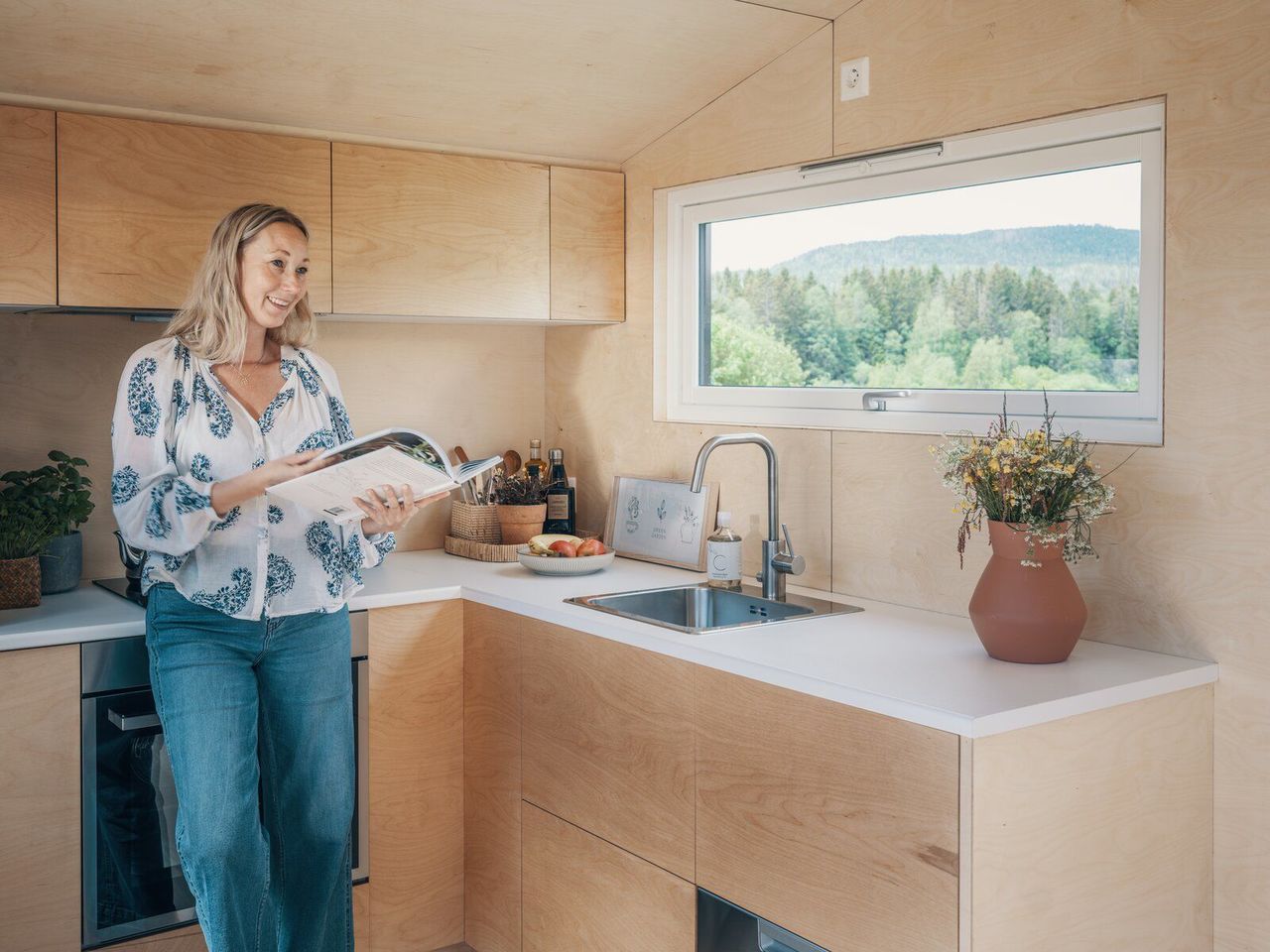
"The corner kitchen is large enough for cooking activities, and the upper cabinets provide additional storage," says David Reiss-Andersen, cocounder of Norske Mikrohus.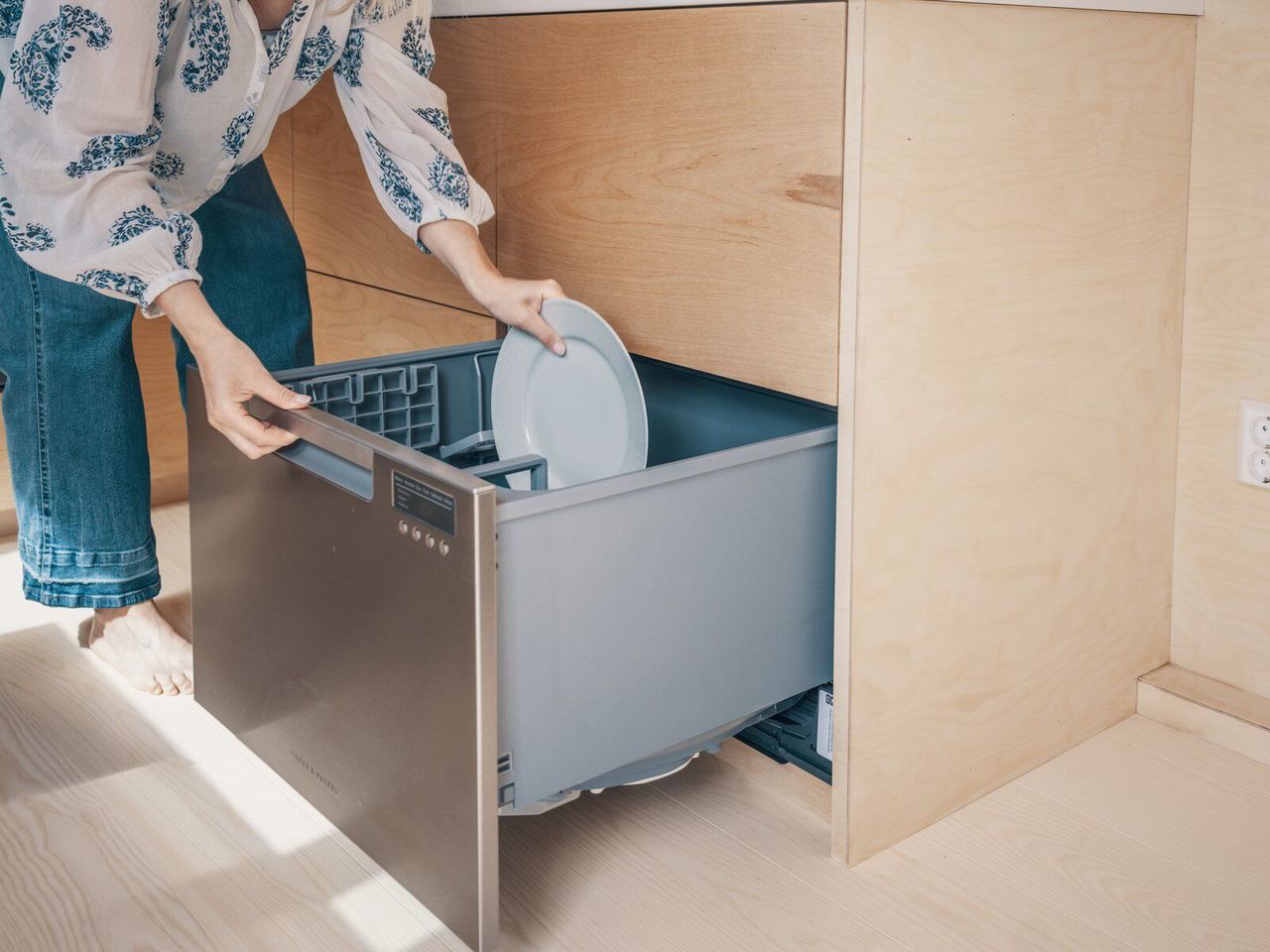
A small dishwasher pulls out of the wood cabinetry in the open-plan kitchen.
Inside, the oiled birch veneer walls and ceiling practically glow, highlighting the subtle pattern of the wood grain. "The floor is ash," David says. "We wanted the warmth of the wood to be the dominant element for the interior."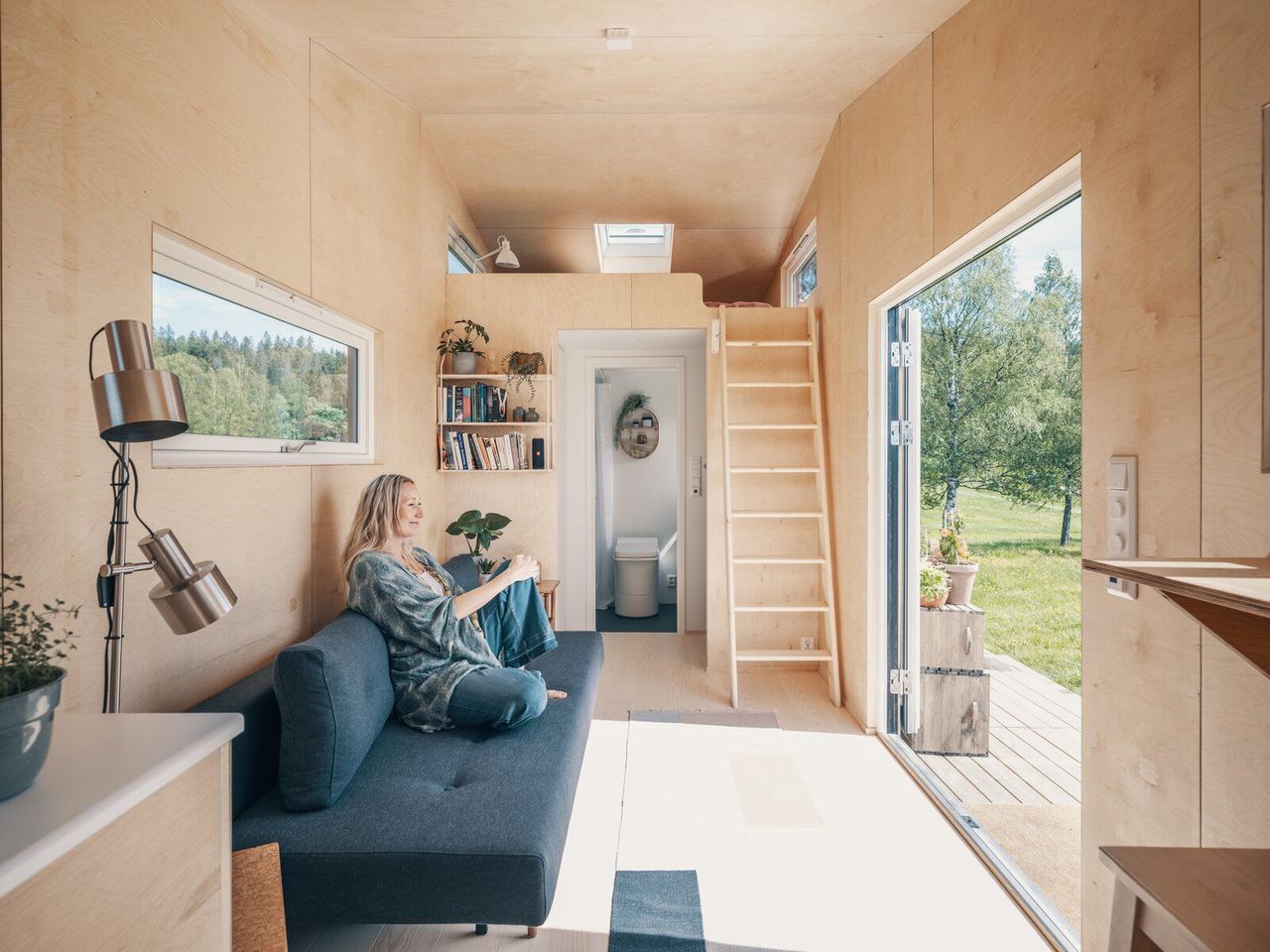
"Tind is built from environmentally friendly Norwegian materials," David says. "It's inspired by Nordic conditions and is designed to withstand them. The large windows and the double doors create the feeling of being one with nature, and the skylight provides a view of the night sky."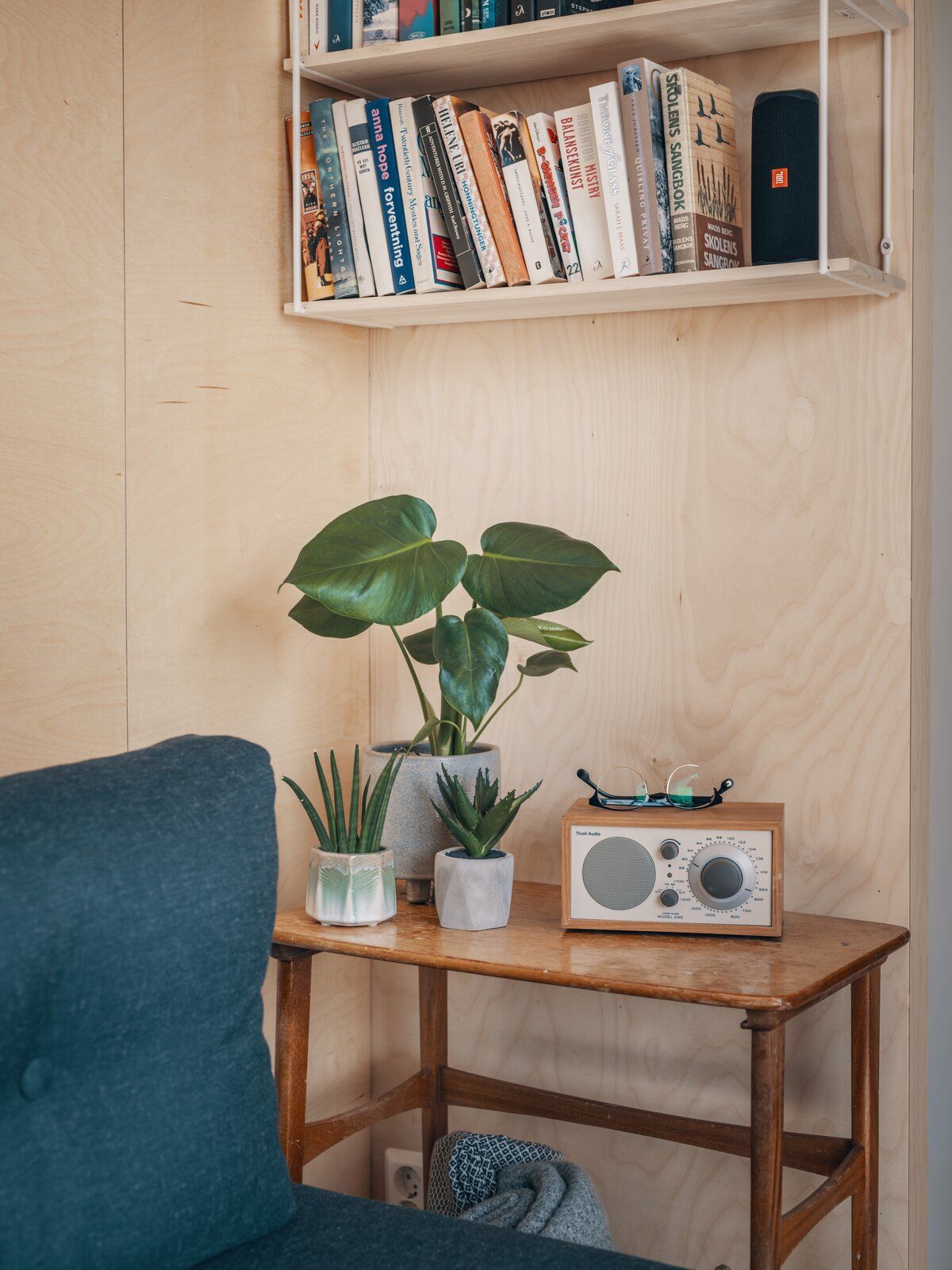
Hanging shelves and a wood side table in the living area provide added storage space for the tiny home.
The couple opted for wood cabinetry fronts without trim or decorative elements, and they employed doors and windows without frames. "It’s minimalistic," David explains. "We wanted this model to patina with use. Any scratches on the walls will not leave a mark in the same way they would on a painted wall. It’s a small space, so people get closer to the walls, making them easier to mark."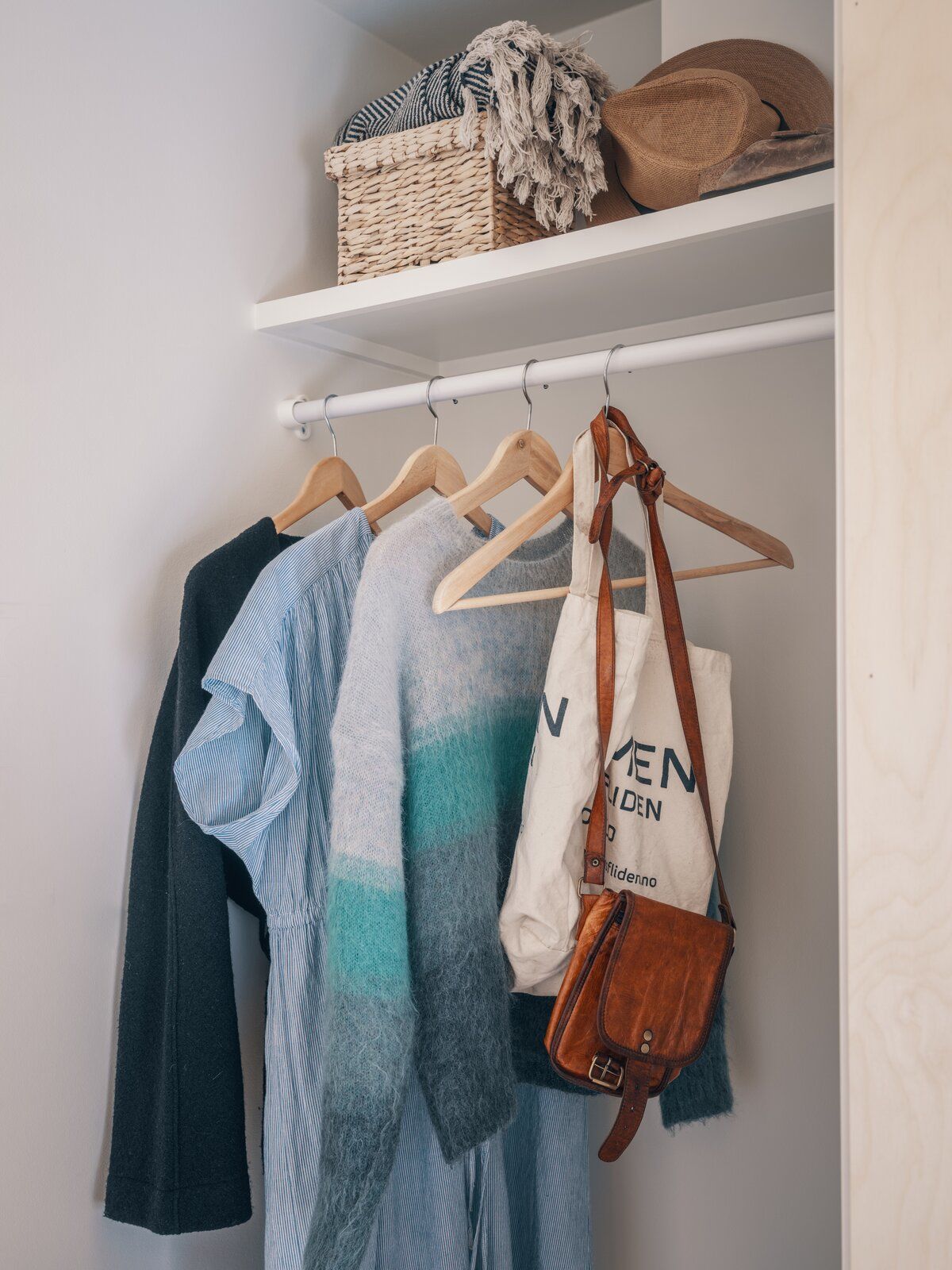
A walk-in closet is situated between the living area and the bathroom.
Tind also features a skylight, automated drapes, a washing machine, and a walk-in closet. "After we created Vilde, we had a lot of requests for a tiny home with a skylight from clients," David says. "And a walk-in closet in a tiny house is just cool. It has almost exactly the same amount of storage as the storage space under the stairs in Vilde."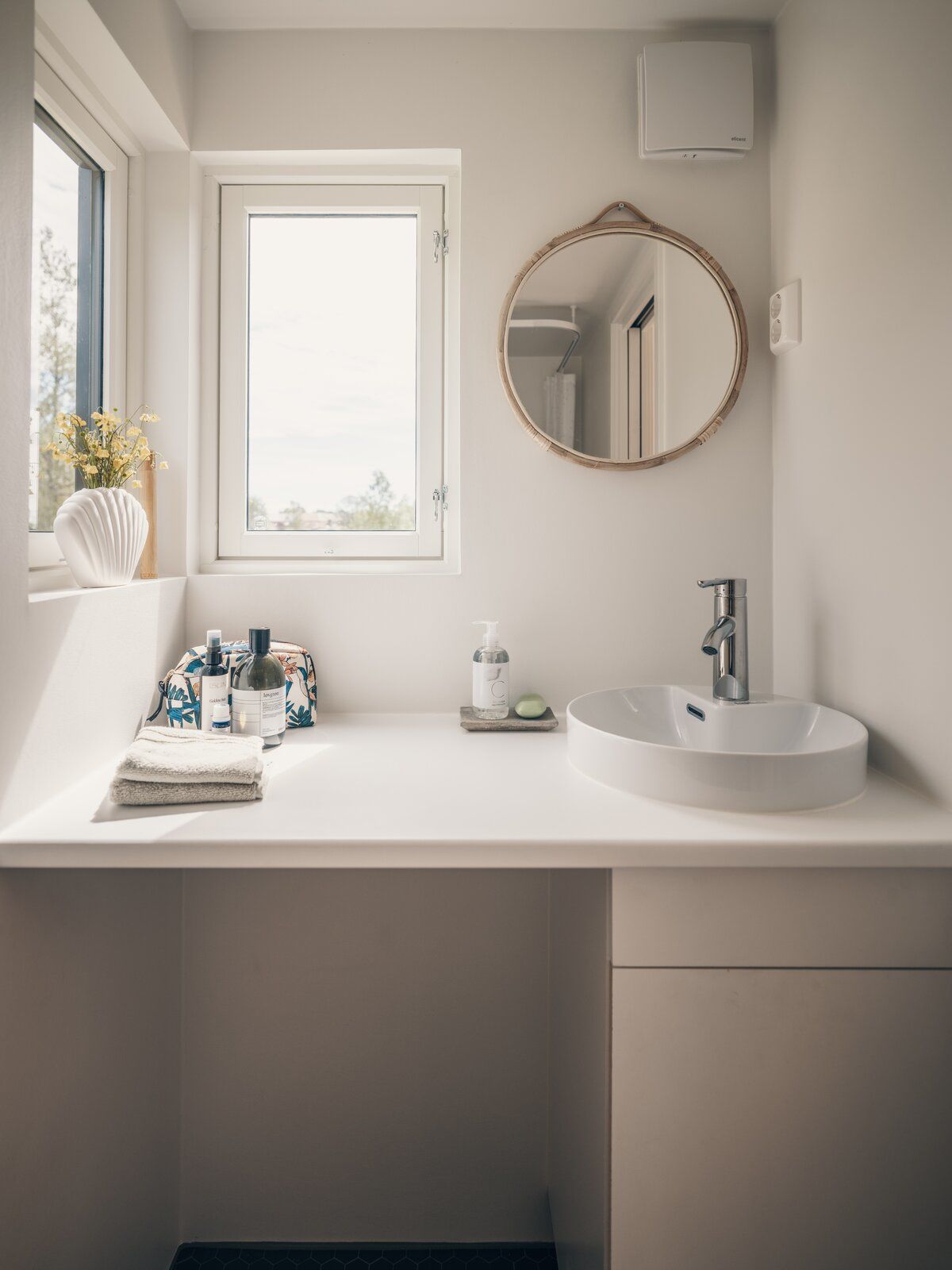
There’s space for a washer/dryer beneath the sink in the bathroom, which is flooded with sunlight thanks to corner windows.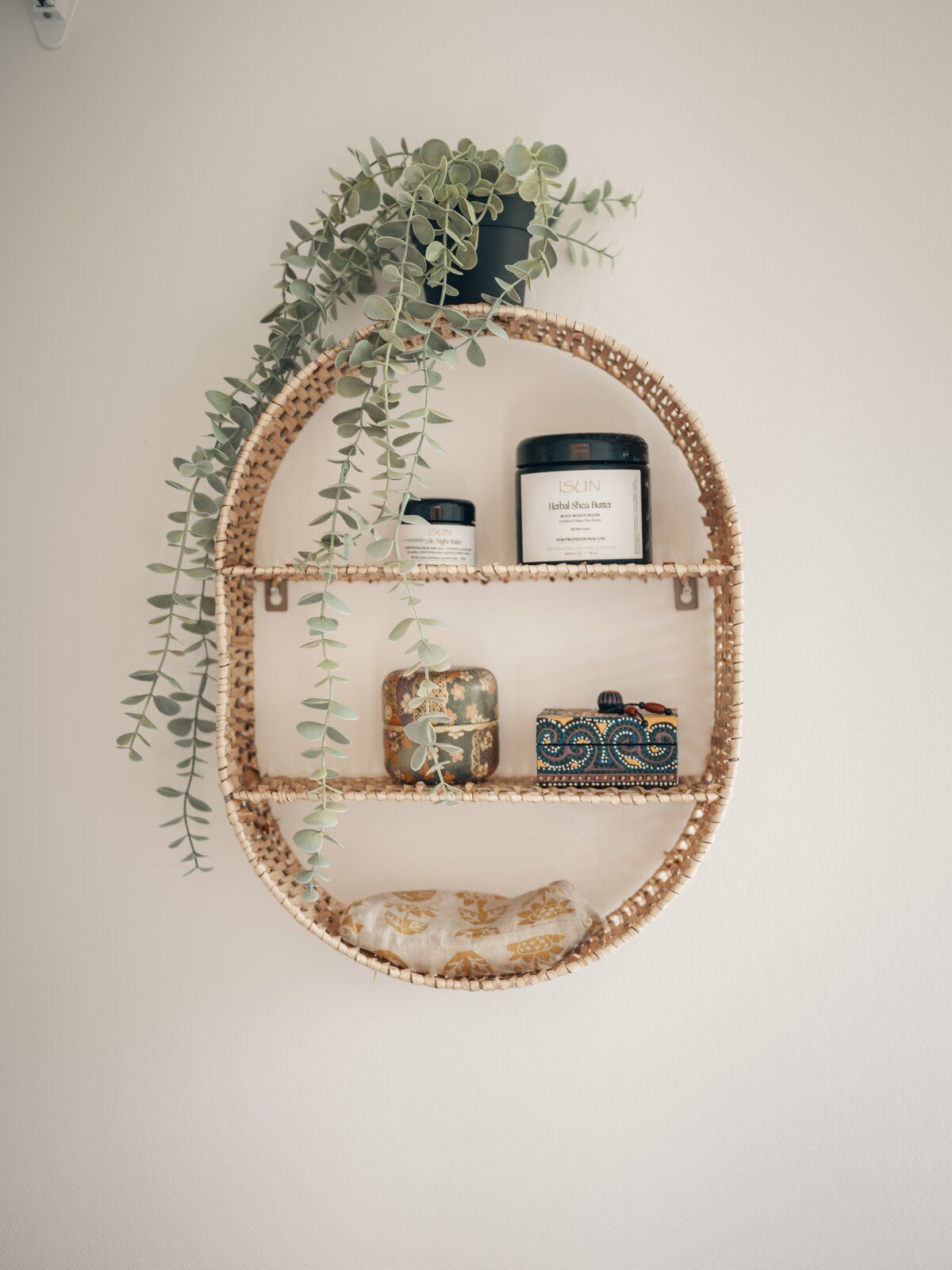
An oval woven shelving unit lends an organic note in the sunlight-filled bathroom.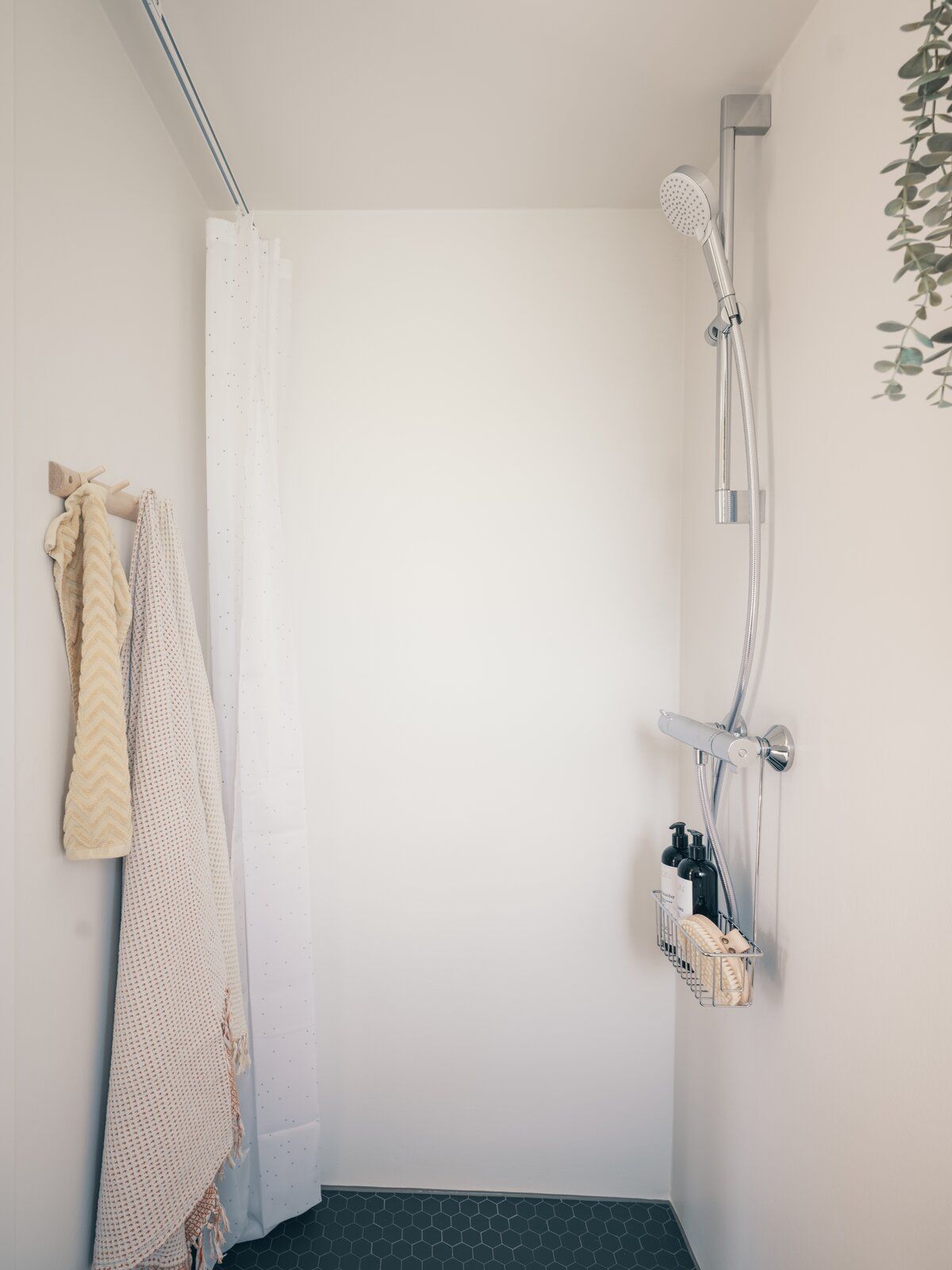
Inspired by houseboats, the Reis-Andersens created a large shower zone for the compact bathroom. "We wanted to focus on functionality," David says.
Devising a tiny home on wheels was of the utmost importance to the Reiss-Andersens, who want to inspire a new way of living. "Our houses are complete units with room for every necessary household item, but they’re flexible and mobile," David says. "You can move them around as you choose-as year-round homes or as a getaway cabins. The idea is to have the freedom to live where you want, and the ability to take your tiny home wherever life takes you."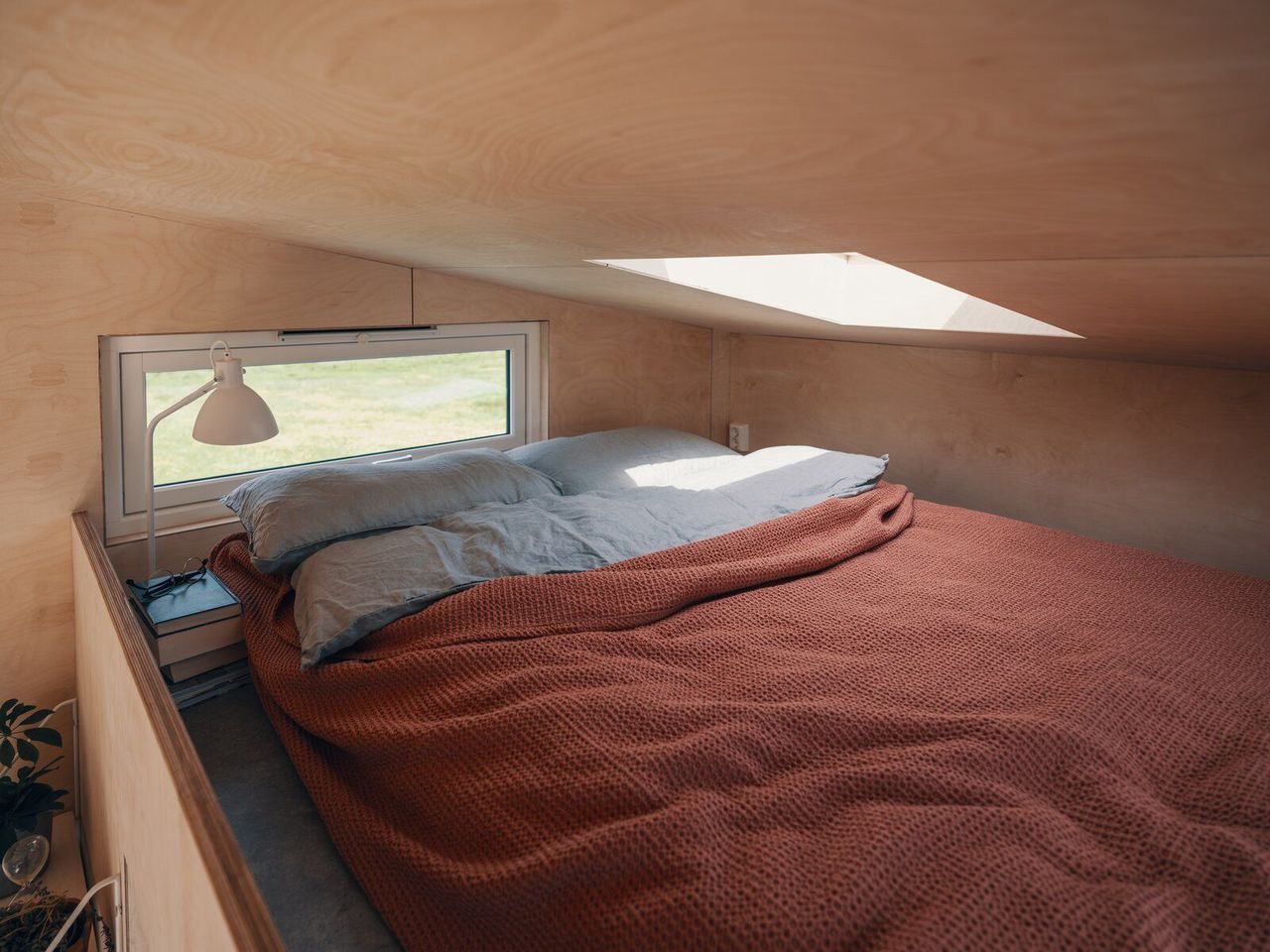
The loft-style bedroom is topped with a skylight that allows residents to stargaze at night.
The couple is facilitating not only freedom, but a way for people to live in nature without interference. "The use of local Norwegian materials is important, and we have technical features like gas, solar panels, and even a Norwegian combustion toilet for higher sustainability. Our homes leave almost no ecological footprint and because they’re affordable-they make housing available for environmentally conscious people who want to live sustainably, or who don’t have the equity to buy a traditional house."

Tropical Boho Homes With Beautiful Vignettes & Vistas
Two tropical boho home designs, featuring swimming pools, cozy lighting schemes, interior archways, natural accents, and beautiful decor vignettes.


![A Tranquil Jungle House That Incorporates Japanese Ethos [Video]](https://asean2.ainewslabs.com/images/22/08/b-2ennetkmmnn_t.jpg)









